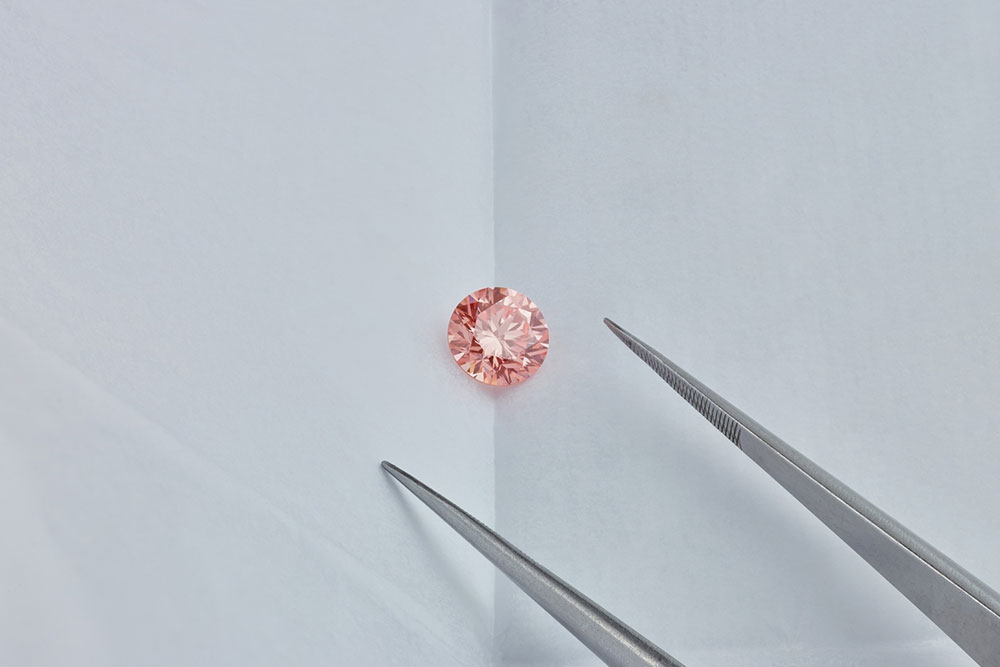Things to know before buying a lab-grown diamond

Natural diamonds have been falling in demand due to their costs and ethical implications. This dip has resulted in the limelight being on lab-grown diamonds. With the same elemental makeup (tetrahedral atoms of carbon tightly bound together) as natural diamonds, lab-grown variants make this precious stone much more affordable and accessible to the general public. Read on to learn a few things everyone needs to know before buying a lab-grown diamond.
What are lab-grown diamonds?
Lab-grown diamonds (also known as lab-created, synthetic, artificial, cultivated, or cultured diamonds) are human-made diamonds. These are visually, physically, and chemically the same as natural diamonds.
Unlike natural diamonds, however, lab-grown diamonds are not centuries old. Extreme pressure and temperature conditions formed natural diamonds billions of years ago. By contrast, lab-grown diamonds are extremely new and made by replicating similar conditions in a controlled environment over a few weeks.
This can be done via two different methods: High Pressure High Temperature (HPHT) or Chemical Vapor Deposition (CVD). These technologies allow business owners to mass-produce diamonds, thus lowering their prices and making them more affordable.
Are lab-grown diamonds real?
Yes! Lab-grown diamonds are classified as real diamonds. This does not include diamond simulants such as cubic zirconia. Although many people question their validity, lab-grown diamonds are made from the same materials as mined diamonds, giving them similar characteristics. These qualities make it difficult to spot the difference between a lab-grown and mined diamond with the naked eye.
Features to look for in a lab-grown diamond
Whether lab-grown or natural, there are certain features that one should carefully consider when buying a diamond, as they impact its overall quality and price. These are:
Carat
The word ‘carat’ is used to measure the weight of the diamond, where one carat is defined as one-fifth of a gram (0.20 grams). It also relates to the size of the diamond.
Clarity
This is used to refer to the purity of the diamond. During the formation process, diamonds can develop several blemishes or flaws, such as foreign particles or cloudiness, that could lower their value. A diamond graded flawless (FL) is considered the most desirable and precious.
Color
Nitrogen can cause discoloration during the diamond formation process, making it appear yellowish. A flawless or perfect diamond is completely colorless. The color is graded on a scale from D to Z, where D marks the most colorless and valuable varieties.
Cut
The ‘cut’ refers to the stone’s shape, geometry, and finish. Since synthetic stones are more consistent than natural diamonds, they are considered easier to cut, maximizing their fire, brilliance, and scintillation.
Wear and tear of lab-grown diamonds
Diamonds are the hardest element found in nature. Since the chemical makeup for lab-grown and natural diamonds is the same, they also have the same physical strength. As a result, they do not chip or wear away any faster than natural diamonds. They neither change or lose color over time nor their shine or sparkle. These factors make them quite durable and an ideal choice for daily use.
What is the depreciation value of lab-grown diamonds?
On average, lab-grown diamonds cost around 30-40% less than mined diamonds. These prices have been dropping over the past few years because lab-grown diamonds do not have a high resale value.
Right after the purchase, the value of lab-grown diamonds may drop to 10% of their price or even lower (this value is around 30% for natural diamonds). However, since these values keep fluctuating, resellers may be able to get a reasonable price for their lab-grown diamonds in the secondary market.
Sustainability and ethics of lab-grown diamonds
Apart from price, the most significant selling point for lab-grown diamonds is the ethics and sustainability factors. There has been a long history of issues with natural diamonds due to the extreme working conditions. Coupled with mining practices that damage the environment, this has led to a massive paradigm shift, resulting in more people opting for lab-grown variants.
However, although lab-grown diamonds have a smaller ecological footprint, one must insist on questioning their origin. This is because lab-grown diamonds are being mass-produced in several parts of the world without considering the overall energy use.
If sustainability is a major concern, buyers must ask the following questions before buying diamonds:
Were the diamonds produced in the country?
Were there any carbon offsets during the production process?
Where are the diamonds cut, cleaned, and polished?
Do they come with sustainability certification?
Can their supply chain be traced?
Is there proof of a “net zero” impact during their growth?
Are lab-grown diamonds truly rarer than natural diamonds?
Neither natural nor lab-grown diamonds are considered rare anymore. A common choice for most engagement rings and other jewelry pieces, diamonds have long been dethroned from being the ‘rarest’ jewel. However, if rarity is an important factor behind one’s choice, one may want to look at colored diamonds, like red, pink, blue, and green diamonds. These diamonds are incredibly expensive and are mined in different parts of the world.
To conclude, although lab-grown diamonds have been around for a few decades, they are only now receiving their due credit and being celebrated for their design, form, and process. Thanks to their accessible price point and sustainability factor, they also align well with the mindset of the younger generations.







